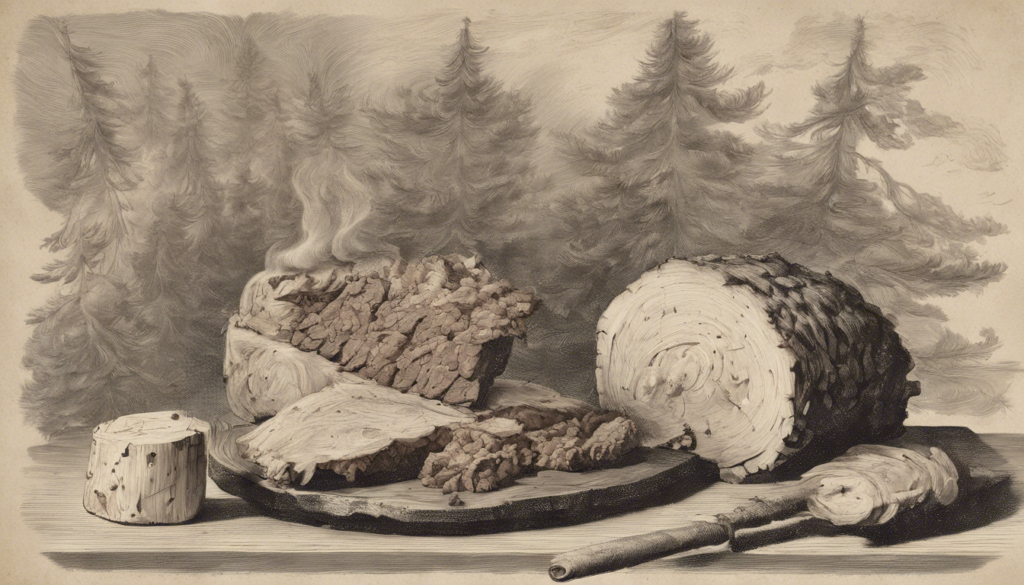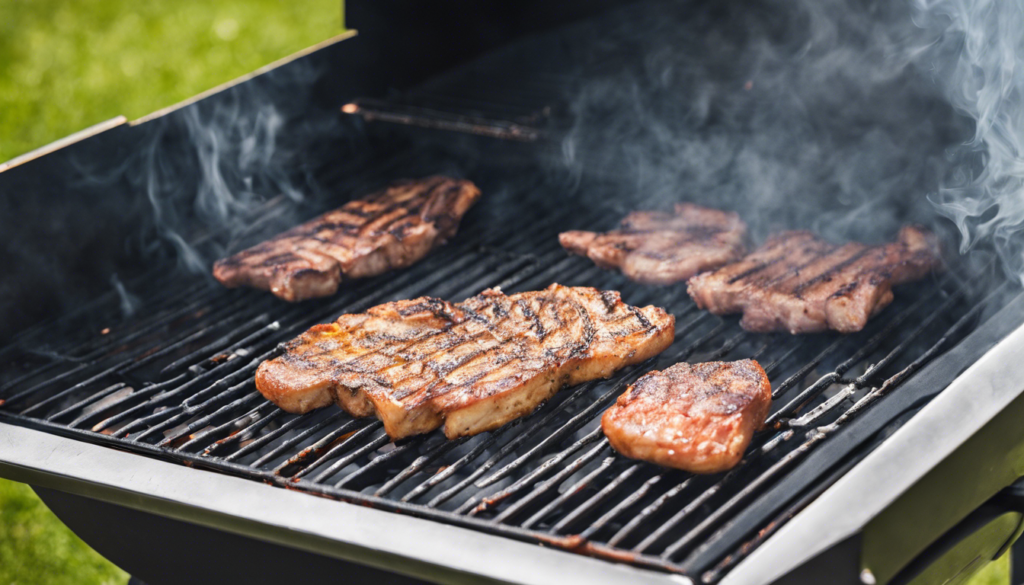Introduction to Pine-Smoked Delicacies
Smoking meat is an age-old culinary practice that involves cooking meat at a low temperature for a long period. This technique imparts a unique flavor to the meat and also helps preserve it. Over the years, various types of wood have been used to smoke meat, each lending a distinctive flavor. Among these, pine-smoked meats stand out for their unique taste and aroma.
Pine-smoked delicacies are a treat for the senses. The pine wood infuses the meat with a robust, earthy flavor that is both unique and tantalizing. If you’re a food enthusiast looking to explore new culinary adventures, or a seasoned pitmaster seeking to expand your repertoire, this guide to pine-smoked delicacies is for you.
In this comprehensive guide, we will delve into the art of smoking meat, the characteristics of pine wood, the nuances of pine-smoked flavors, and much more. You’ll also find a selection of delicious pine-smoked recipes to try at home.
The Art of Smoking Meat
The practice of smoking meat dates back to ancient times when people discovered that smoke could preserve meat and enhance its flavor. Over the centuries, the technique has evolved, with different cultures developing their unique methods of smoking meat.
There are various methods to smoke meat, including cold smoking, hot smoking, and smoke roasting. Each method imparts a different flavor and texture to the meat. The choice of wood is also crucial in determining the final taste of the smoked meat.
When it comes to wood selection, each type of wood lends a distinct flavor to the meat. For instance, hickory wood gives a strong flavor, applewood imparts a sweet, fruity taste, while pine wood offers a unique, robust flavor. Understanding the characteristics of each wood type can help you master the art of smoking meat.
Understanding Pine Wood for Smoking
Pine wood is known for its strong, earthy flavor that can significantly enhance the taste of smoked meats. It’s a softwood that burns hot and fast, producing a lot of smoke. This characteristic makes it a popular choice for smoking meats that require a short smoking time.
The flavor profile of pine-smoked meat is robust and distinctive. The intense smoky flavor can be a delightful surprise for those trying pine-smoked delicacies for the first time. However, because of its strong flavor, pine wood is best used in moderation to prevent overpowering the natural taste of the meat.
Like all things, using pine wood for smoking has its pros and cons. On the upside, it’s readily available and affordable. On the downside, it can produce a lot of resin which can affect the taste of the meat if not managed properly.
Can You Smoke Meat with Pine Wood?
There’s a common myth that pine wood should not be used for smoking meat due to its high resin content. However, this is not entirely accurate. While it’s true that pine wood contains more resin than hardwoods, with the right technique, it can be used to smoke meat effectively.
Many professional pitmasters and chefs use pine wood to smoke meat and vouch for its unique flavor. However, they recommend using it sparingly and in combination with other hardwoods to balance the strong pine flavor.
When using pine wood for smoking, it’s important to consider safety. Make sure to use well-seasoned wood to reduce the amount of resin. Also, avoid using treated or painted pine wood as it can release harmful chemicals when burned.
Pine-Smoked Delicacies Around the World
Pine-smoked delicacies are enjoyed in many parts of the world. In North America, pine-smoked salmon is a popular dish, especially in the Pacific Northwest where pine trees are abundant. The pine smoke gives the salmon a unique, earthy flavor that is highly prized.
In Europe, particularly in the Nordic countries, pine-smoked meats are a traditional part of their cuisine. Pine-smoked ham, for instance, is a holiday favorite in many Scandinavian homes.
In Asia, particularly in Korea, pine-smoked duck is a delicacy. The rich, smoky flavor of the pine wood complements the fatty, savory taste of the duck, creating a dish that is both delicious and satisfying.
How to Smoke Meat with Pine Wood
Smoking meat with pine wood requires a bit of skill and knowledge. Here’s a step-by-step guide to help you get started:
1. Choose your meat: Pine-smoked flavors work well with a variety of meats, including beef, chicken, and fish.
2. Prepare your smoker: Make sure your smoker is clean and functioning properly.
3. Prepare your wood: Use well-seasoned pine wood to reduce the amount of resin.
4. Preheat your smoker: Aim for a temperature between 225°F and 250°F.
5. Smoke your meat: Place your meat on the smoker and let it smoke slowly. The smoking time will depend on the type and size of the meat.
6. Monitor the temperature: Keep a close eye on the temperature to ensure it stays within the desired range.
7. Rest your meat: Once the meat is done, let it rest for a few minutes before serving to allow the juices to redistribute.
When smoking with pine wood, it’s important to use it sparingly to avoid overpowering the meat’s natural flavor. Also, remember to keep the smoker’s temperature steady to ensure the meat cooks evenly.
Common mistakes to avoid when smoking meat with pine wood include using too much wood, not controlling the temperature properly, and not allowing the meat to rest after smoking.
Pine-Smoked Meat Recipes
Ready to try your hand at smoking meat with pine wood? Here are a few delicious recipes to get you started:
Pine-Smoked Beef Recipe
This recipe uses a simple spice rub and a slow smoking process to create a flavorful, tender beef brisket. The pine smoke adds a unique, robust flavor that complements the rich taste of the beef.
Pine-Smoked Chicken Recipe
This recipe takes the humble chicken to new heights with a delicious marinade and a touch of pine smoke. The result is a juicy, flavorful chicken with a delightful smoky aroma.
Pine-Smoked Fish Recipe
This recipe uses a whole fish, such as salmon or trout, and a simple brine to enhance the natural flavors of the fish. The pine smoke adds a subtle, earthy flavor that pairs beautifully with the fresh taste of the fish.
Pairing Pine-Smoked Meats with Other Foods
Pine-smoked meats pair well with a variety of side dishes. For instance, pine-smoked beef brisket can be served with coleslaw and cornbread for a classic Southern meal. Pine-smoked chicken pairs well with roasted vegetables and a fresh salad. And pine-smoked fish can be served with a side of grilled asparagus and a squeeze of fresh lemon.
When it comes to wine and beverage pairings, consider the strength of the pine-smoked flavor. For robust, pine-smoked meats, opt for full-bodied red wines like Cabernet Sauvignon or Zinfandel. For lighter, pine-smoked dishes like fish or chicken, a crisp white wine like Sauvignon Blanc or a light beer can be a great choice.
Conclusion: The Unique Appeal of Pine-Smoked Delicacies
Pine-smoked delicacies offer a unique culinary experience. The robust, earthy flavor of the pine smoke adds a new dimension to the taste of the meat, making it a delightful treat for the senses. Whether you’re a seasoned pitmaster or a novice cook, smoking meat with pine wood can be a fun and rewarding endeavor.
So why not give it a try? With the right technique and a bit of practice, you can create delicious pine-smoked delicacies in your own backyard. Happy smoking!
Frequently Asked Questions about Pine-Smoked Meats
Is pine-smoked meat safe to eat?
Yes, pine-smoked meat is safe to eat as long as you use well-seasoned wood and avoid treated or painted pine wood, which can release harmful chemicals when burned.
Can all types of meat be smoked with pine wood?
Yes, all types of meat can be smoked with pine wood. However, due to its strong flavor, pine wood is best used sparingly and in combination with other hardwoods.
How to store pine-smoked meats?
Pine-smoked meats can be stored in the refrigerator for up to 4 days. For longer storage, you can freeze the smoked meat in airtight containers or freezer bags for up to 3 months.


